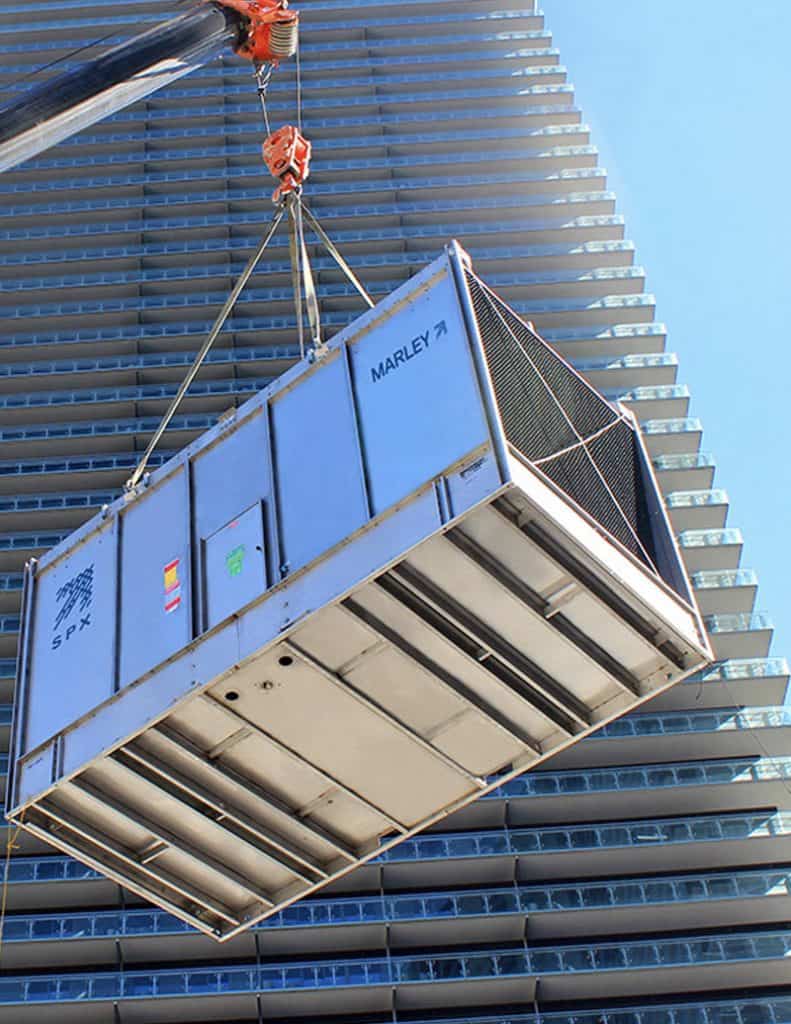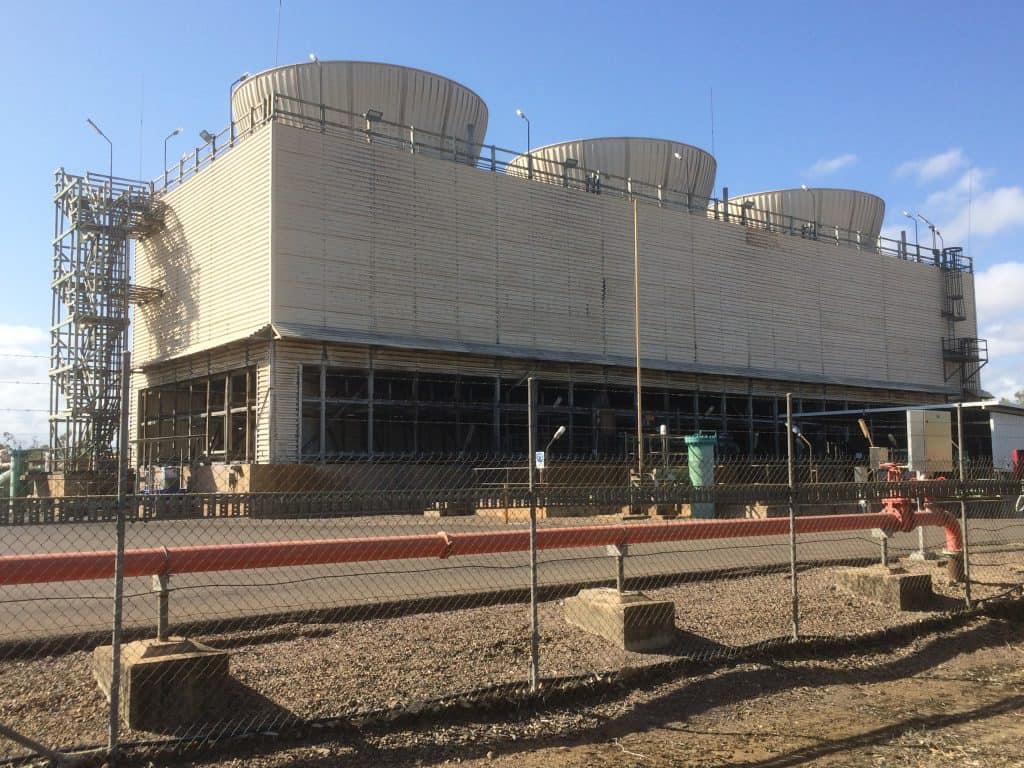Cooling towers are not a ‘one size fits all’ solution. Cooling towers are built in a range of shapes and sizes with various materials specifically suited to your facility’s needs and your operational budget.
Cooling towers can be placed in one of two broad categories – field-erected and factory-assembled. But what’s the difference? And which tower is best suited to your facility’s needs?
Since 2002, Marley Flow Control has been the industry leader in the manufacturing of cooling towers. We are an Australian-owned and operated brand that offers a high level of expertise and an extensive range of products that are ready to order. Our wealth of knowledge has allowed us to work with some of the country’s largest businesses and corporations we are pleased to call our clients.
As industry leaders, we have a high level of expertise and can provide a wide range of cooling tower services. If you need help with cooling tower noise control, contact our highly experienced team to discuss your options today.
This blog will define field-erected towers and factory-assembled towers, and compare their differences.
What is a factory assembled tower?
A factory-assembled tower (FAP), also known as a ‘packaged’ or ‘commercial’ tower, is pre-assembled at a different location and then transported to the new facility by truck. Some FAP towers will need to be built and shipped in several sections, while others will be small enough to move intact.
These towers can be crossflow or counterflow types, or even induced draft or forced draft, depending on what it will be used for.
Read: Cooling tower services – types of cooling towers.
What is a field erected tower?
Field erected, or ‘industrial’ towers (FEP), are constructed at the site of use using a bolted frame structure. This is because FEP towers are generally too big to economically assemble off-site and transport back to the facility.
A typical new FEP cooling tower has:
- A pultruded fibre-reinforced plastic (FRP) structure
- FRP cladding
- A mechanical unit for air draft
- Drift eliminator
- Fill (heat transfer media)
- Water spray system
Depending on the application, FEP towers are either crossflow or counterflow towers.
What is the difference between FAP and FEP towers?
FAP towers
Because FAP towers are pre-designed, they are constructed in far less time than FEP towers – meaning a shorter lead time for you. And you won’t need to worry about labour safety and regulations while your tower is being made, as all construction is done off-site.
Some projects request certifications to ensure that the tower meets certain factors. All FAP towers come with pre-certification or approval in all operation areas – such as:
- Thermal performance
- Noise levels
- Fire rating
- Wind and seismic capabilities
FEP towers
Unlike FAP towers – which have limited customisation options – FEP towers can be tailor-designed and constructed with several technological aspects specifically for your facility. This means that FEP towers have more scope to meet the needs of your factory.

FEP towers also have fewer but larger fans than FAP towers for the same cooling duty. In some facilities, this can prove to be more a more energy-efficient way of cooling their site.
Read: How to improve the efficiency of your cooling tower
Which cooling tower should I choose?
So, which cooling tower does your factory need? Site-specific and time factors will influence your choice of cooling tower, for example:
- The cooling load of the tower (heat rejection)
- Length of time permitted to shut down your facility
- Whether or not you need a tower with a special trickle type fill for resistance to contaminated process water.
Stainless steel FAP cooling towers are not just for commercial buildings. They are also commonly used in chemical, power generation, sugar, and pulp and paper industries.
On the other hand, FEP towers are often used in large commercial building clusters, otherwise known as district cooling plants, with sufficiently large requirements.
However, in general terms, if your factory had a heat rejection amount of under 100 megawatts (MW) or less, a FAP tower may be more suitable for you. Facilities with a heat rejection of more than 100MW would more likely choose an FEP tower.
If your facility has a requirement in the 50 -150MW range, it’s important to have a balanced comparison of FEP and FAP alternatives. At Marley Flow Control, we have a full range of both FEP and FAP products. You can browse our full line of cooling towers here.
Can I put a FAP tower on an existing concrete basin?
Decades ago when FAP towers weren’t available, all towers, no matter how small, were FEP towers. This means that many factories now need to replace their tower – however, replacing it with another FEP tower isn’t economically viable.

While FAP towers can come with their own basin, it is common to use a FAP tower for a complete replacement using the original FEP concrete basin. This often proves to be more cost-effective and time-efficient than constructing a new tower.
Marley Flow Control: Australia’s leading cooling tower manufacturer
Marley Flow Control is the Australian distributor for the SPX (Marley) cooling tower range. We will help choose the correct product according to the thermal duty, noise and space limitations, environmental conditions and water conditions.
We are also the only manufacturer in Australia to offer both factory assembled and field erected cooling towers. So you can feel assured that you are getting the right tower for your facility.
Australian owned and operated, we are a well-known and trusted brand that offers a high level of expertise and an extensive range of products ready to order. Additionally, we provide a comprehensive cooling tower inspection and repair service. We provide repair work on the fill and mechanical components and a full functional annual assessment. Afterwards, we provide a comparison between a comprehensive refurbishment or a new cooling tower.
Our experienced team has the skills and equipment to fit new motors, driveshafts, gearboxes and fans in the field, including long laser alignments of up to four metres.
Find out how we can use our engineering experience to help find the right solution for your business needs. Contact us here for a free quote.
